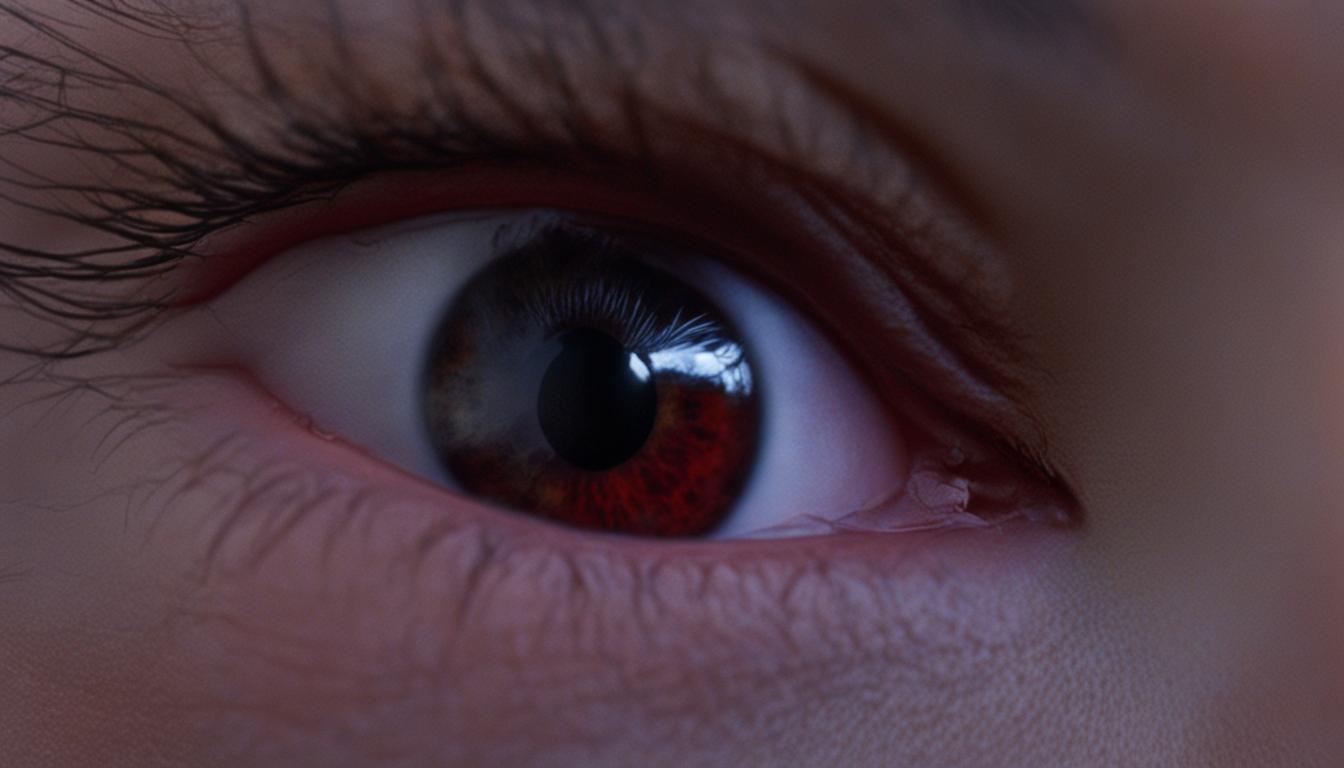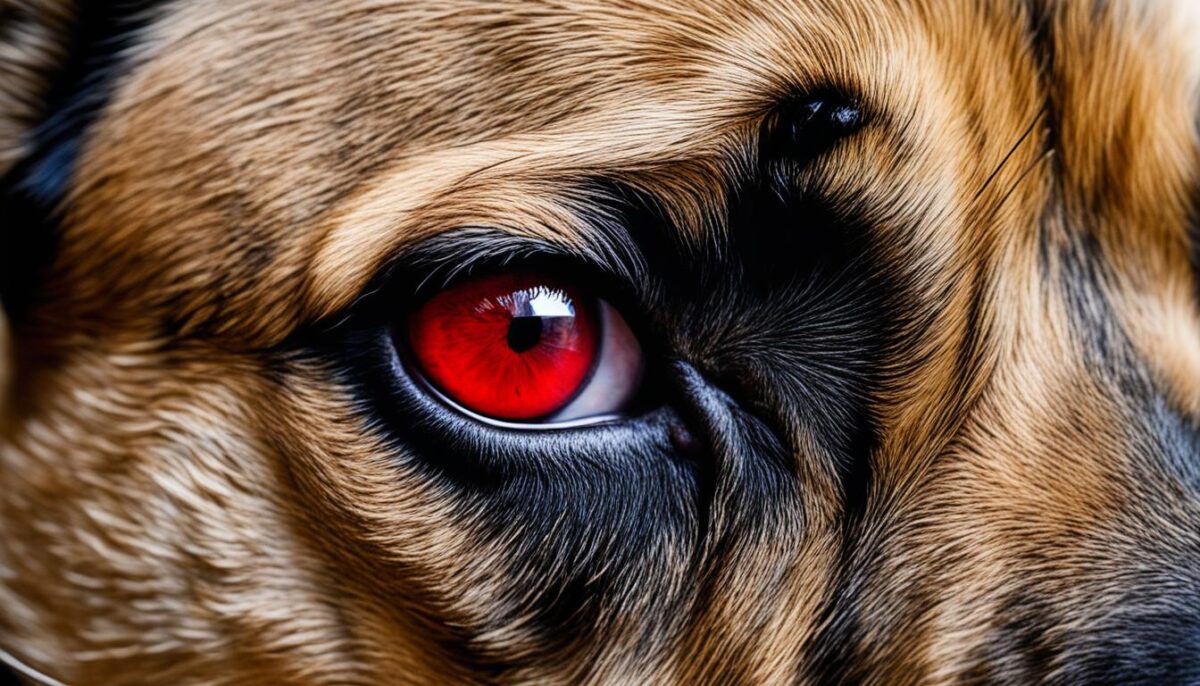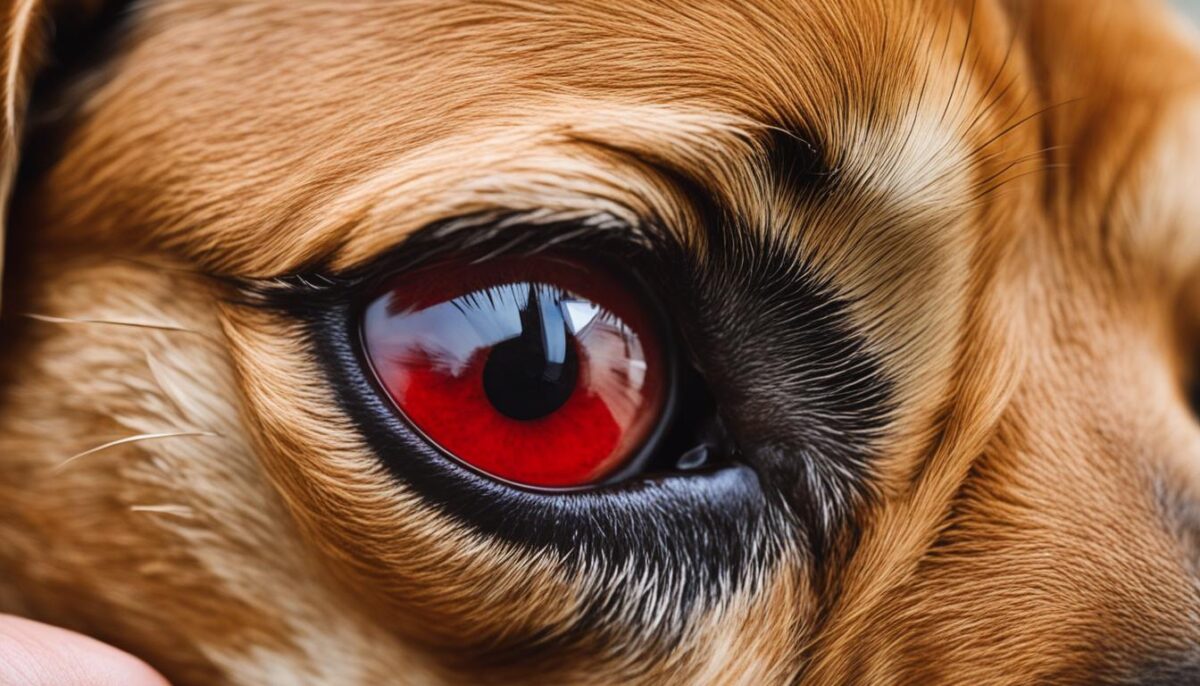Have you ever noticed your furry friend squinting or rubbing their eye? Just like you, dogs can get bumps on their eyelids. These are called styes. A dog stye is a red, sore bump that can make your pet feel not so great. It happens when tiny hairs near the eye get blocked and then bacteria make the area infected. Taking care of your dog’s styes quickly is important because it can lead to more serious problems if not treated.
Your dog’s eyes are precious, and keeping an eye on your pet’s eye health is a big part of loving and caring for your pet. When you see signs of dog stye symptoms, you need to act fast. The good news is there is stye treatment in dogs, and you can help keep their peepers healthy. If you think your dog might have an eye infection or a stye, it’s time to talk to the vet.
Remember your pal’s eyes should be bright and clear, not red or hurt. So, keep reading to learn how to spot problems like styes and other eye infections in pets before they get worse.
Key Takeaways
- Learn what a dog stye looks like and how it can affect your pet.
- Understand why it’s important to keep an eye out for dog stye symptoms.
- Know when to call the vet for help with canine eye care.
- Discover treatments you can do at home and when to seek professional help.
- Find out how taking quick action can protect your dog’s eye health.
Understanding Styes in Dogs
Have you ever seen a red, sore bump near your pup’s eye and wondered, what is a stye? A canine hordeolum, commonly known as a stye, is not just a human ailment—dogs can get them too! It’s an eyelid infection in dogs that can cause some noticeable discomfort. Think of it as a pimple, but on your dog’s eyelid.
Defining a Canine Stye
Styes in dogs are similar to those in humans. They occur when oil glands in the eyelid get blocked with dirt and debris. This can lead to an infected bump filled with pus. Proper pup eye care can help prevent these eye blockers, supporting overall canine eye health.
Spotting the Signs of a Stye in Your Pet
Wondering about the signs of a stye or dog eye infection symptoms? It’s vital to catch these early to help your furry friend. Look for eye swelling in dogs, redness, or pus oozing from their eyelid. If you notice any of these symptoms, it’s time for a vet visit to protect your dog’s eyesight.
Styes vs. Other Eye Concerns
While styes are common, they can sometimes be confused with other canine eye conditions, like cherry eye. Cherry eye is the prolapse of the gland in the third eyelid and looks like a cherry stuck in the corner of your dog’s eye. It’s important to distinguish between these conditions because they each require different treatments.
Keeping a close watch on your dog’s eyes can help ensure they stay happy and healthy. Remember, when you’re considering pup eye care, being proactive is key!
Common Causes and Risk Factors
Have you ever wondered what could cause eye troubles like styes in dogs? Several factors play a role in this uncomfortable condition. From the environment your dog plays in, to their overall health, it’s crucial to understand what can put them at risk.
Environmental and Behavioral Factors
If your furry friend loves to play outside, watch out for canine allergies and eye irritants for dogs such as dust, pollen, or chemicals. These can cause red, itchy eyes that make your dog want to rub them—the first step to creating a pesky stye. Dog eye injury prevention is key. So, keep their environment clean and make sure they stay away from harmful substances.
Medical Conditions Leading to Styes
Poor dog immune health can leave your pet more open to infections. Common ocular conditions in dogs, like conjunctivitis or glaucoma, can lead to styes. And did you know that dogs can even get the flu, known as canine influenza? Yes, and such conditions can weaken your pooch’s defenses, setting the stage for bacterial eye infections.
Here’s a table of some common medical conditions and how they’re related to dog styes:
| Medical Condition | How It Contributes to Styes |
|---|---|
| Conjunctivitis | Inflammation that can block tear ducts, leading to infection. |
| Glaucoma | Increased pressure in the eye, promoting bacterial growth. |
| Ocular Ulcers | Open sores that are prone to infection if not treated properly. |
| Canine Influenza | A weak immune system can make it easier for bacteria to take hold. |
Keeping your dog’s eyes clean and their general health in check can greatly reduce their risk of developing styes. If you notice any changes in your dog’s eyes or behavior, it’s important to consult your vet right away. They can spot these issues early and help your best friend stay happy and healthy.
Can Dogs Get Styes in Their Eye? Identifying Symptoms
When your dog gets a little eyelid bump, it might be a stye. Styes can make your furry friend feel not so good. You might see them blinking a lot or having some dog eye discharge, which is goop or tears coming from their eye. These are ways of recognizing dog eye problems.
Let’s look at some signs that your dog might have a stye:
- Redness in their eye
- Swollen eyelids like a little puffy pillow
- A yucky bump that might have pus
Catching these signs early means you can help your dog feel better faster.
| Symptom | What You Might See or Notice |
|---|---|
| Eye Redness | The white part of your dog’s eye looking pink or red. |
| Swollen Eyelids | Their eyelid is puffy, and sometimes it’s hard for them to open their eye all the way. |
| Pus-filled Bump | A little round bump on the eyelid that might have some yellowish goo on it. |
| Eye Discharge | Wet and goopy stuff coming out from their eye, more than just normal tears. |
Keep an eye out for these things! If you spot them, it might be time for a little trip to see the vet.
Initial Steps to Addressing Your Dog’s Stye
If your dog has a stye, don’t worry! There are things you can do at home to help them feel better. Simple care is often the first step in tackling these pesky eye problems.
Home Remedies: Warm Compresses and Gentle Cleansing
Soothing your pet’s stye can start with something as easy as a warm compress—just use a clean, warm, wet cloth and hold it gently against their eye area. This can reduce swelling and pain. After the compress, you can also clean their eye with a dog-safe eye wash. This kind of care is part of good eye care for pets. Remember to be gentle and use wipes or solutions made just for dogs!
When to Seek Veterinary Attention
Even with the best home treatment for a stye in dogs, it’s important to know when to call the experts. If your dog’s eye doesn’t get better or looks worse, it’s time for a pet emergency visit to a dog eye care professional. A veterinary eye examination can give the right treatment and stop more serious problems. Let’s look at when you should definitely take your dog to see the vet.
| Sign | What to Do |
|---|---|
| Eye is getting more red or swollen | See the vet right away |
| Your dog is in pain | Don’t wait—get to the vet |
| Stye isn’t getting better with home care | Time for a professional check-up |
| Signs of infection like pus or oozing | Vet can give special medicine |
Remember, even if your dog’s stye seems tiny, getting help from a vet is the best way to make sure your furry friend stays happy and healthy!
Treatment Options for Canine Styes
When your furry friend is dealing with an uncomfortable stye, it’s important to know the right steps to help them get better. Vets have a few tricks up their sleeves that can clear up these pesky eye problems. Let’s explore how to get your pup’s peepers back to their cheerful, shiny selves!
Medications and Prescription Eye Drops
For starters, antibiotic treatment for styes is usually the go-to solution. These aren’t just any meds; they’re special canine eye medications designed to kick out the icky bacteria. Your vet might give you some creamy ointments to apply right to the eye or recommend drippy drops to soothe the infection away. And if your dog isn’t too keen on getting things put in their eyes, oral tablets can also join the battle against the infection.
Potential for Professional Removal
Sometimes, that stubborn stye might need a little more than medicine—it might need to be shown the door by a vet. This is called veterinary stye removal, and it’s for those tough cases where the stye doesn’t want to leave on its own. Vets might use gentle dog eye surgery to carefully open up the stye and clean it out. After that, it’s super important to keep your dog’s eye clean to make sure the icky stuff doesn’t come back. Remember, this is all about making sure your doggy friend is happy and comfy—with clear vision to spot their favorite toys and treats!
| Treatment | Use Case | Procedure | Follow Up |
|---|---|---|---|
| Antibiotic eye drops/ointment | Mild to moderate styes | Apply as prescribed by veterinarian | Regular cleaning, monitor for improvement |
| Oral Antibiotics | When topical treatment is inadequate | Administer orally according to vet’s instructions | Check for side effects, ensure full course is completed |
| Professional Removal | Stubborn, unresponsive styes | Sedation followed by incision and drainage | Strict cleanliness, possible medication continuation |
Dealing with a dog eyelid infection isn’t fun, but with the right help and some care, your best buddy’s eyes can be bright, shiny, and stye-free in no time!
Conclusion
Maintaining your dog’s eye health is essential, and by keeping their eye area clean, you’re taking a big step in preventing styes in dogs. Remember, just like people, dogs can have allergies, so managing those allergies is crucial for their comfort. Plus, it’s always a good idea to shield their eyes from harsh winds and flying debris when you’re out having fun. Simple steps like these can help keep those pesky styes at bay.
Regular veterinarian check-ups are your best friend when it comes to ensuring canine eye health. Vets can spot problems like styes before they turn into big issues. If you notice anything unusual about your dog’s eyes, don’t wait. Getting help quickly is the best way to make sure your pet stays happy and sees clearly. From puppyhood and beyond, keeping an eye on eye health is a part of loving and caring for your dog.
For all the young readers out there, think of taking care of your dog’s eyes as part of playing detective. Keep watch for redness or swelling, and if you spot trouble, alert your family. A quick visit to the vet can often fix things right up. Use these puppy eye care tips to be a super pet buddy. Together with your family and vet, you can help your furry pal have bright and healthy eyes!
FAQ
Can dogs develop styes in their eyes?
Yes, dogs can get styes, also known as a hordeolum, which are painful swollen bumps on the eyelid resulting from clogged hair follicles that become infected.
What does a stye look like on a dog?
A dog stye can appear as a red, painful bump on either the upper or lower eyelid, resembling a pimple or abscess filled with pus.
How can I tell if my dog has a stye and not another eye condition?
If your dog has a stye, you might notice symptoms like eyelid redness, swelling, or a pus-filled bump. Conditions like cherry eye have different symptoms, such as a prolapsed third eyelid, which looks like a reddish mass at the eye’s corner.
What causes styes in dogs?
Styes in dogs can be caused by various factors including environmental allergies, debris causing eye irritation, weakened immune systems, or underlying medical conditions such as conjunctivitis or glaucoma.
Are there any symptoms that indicate my dog might have a stye?
Yes, symptoms of a dog stye include eye redness, swollen eyelids, or the presence of a visible pus-filled abscess. If you notice these symptoms, it’s crucial to seek veterinary care.
Should I try to treat my dog’s stye at home?
You can start by gently washing the affected area and applying warm compresses to ease irritation. Use clean cloths or dog-safe eye wipes. If there’s no improvement or symptoms worsen, seek veterinary advice.
When is it necessary to see a vet for a dog’s stye?
If home remedies don’t improve the stye, or if your dog is in discomfort or the stye appears to affect their vision, consult a veterinarian immediately for professional treatment.
What treatments might a vet prescribe for a dog stye?
A veterinarian typically prescribes antibiotics, either as creams or medicated eye drops, to treat the infection causing the stye. For resistant cases, oral medications might be used.
Can a dog’s stye require surgical removal?
Yes, if a stye doesn’t heal with standard treatments or if it significantly affects the dog’s vision or comfort, a vet may perform a minor procedure to drain the stye under sedation.
How can I prevent my dog from getting styes?
Preventive measures include keeping your dog’s eye area clean, managing allergies, protecting their eyes from wind and debris, and regular vet check-ups to catch and treat any issues promptly.


